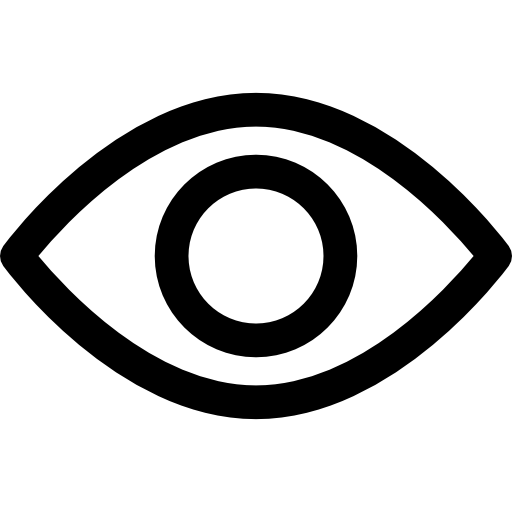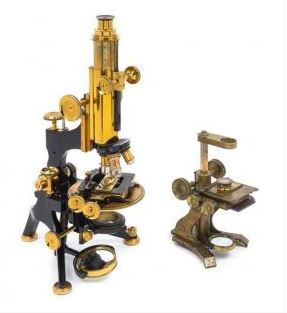Identification and Price guides for Antiques & Collectibles


ANTIQUE AND COLLECTIBLE MICROSCOPES:
A Guide to Researching and Identifying Them
Join the most updated and complete collectibles research online - Learn more...
 Microscopes are fascinating instruments that allow us to see the world in greater detail than our naked eyes ever could. Over the years, many different types of microscopes have been developed, each with its own unique history and design. Antique and collectible microscopes, in particular, are highly sought after by collectors and historians alike. In this guide, we will explore the world of antique and collectible microscopes, including their history, design, and how to research and identify them.
Microscopes are fascinating instruments that allow us to see the world in greater detail than our naked eyes ever could. Over the years, many different types of microscopes have been developed, each with its own unique history and design. Antique and collectible microscopes, in particular, are highly sought after by collectors and historians alike. In this guide, we will explore the world of antique and collectible microscopes, including their history, design, and how to research and identify them.
History of Antique Microscopes
Microscopes have been around for centuries, with the first recorded use dating back to the 16th century. Early microscopes were simple devices that used a single lens to magnify small objects, but over time, their design became more complex and sophisticated. By the 19th century, the microscope had become an essential tool in scientific research, and many different types and designs had been developed.
Antique microscopes were typically made by hand and were often highly ornate, featuring intricate designs and engravings. They were also typically made of brass, which was a popular material at the time due to its durability and aesthetic appeal. Many antique microscopes were produced by well-known makers such as Carl Zeiss, Ernst Leitz, and Bausch & Lomb.
Design of Antique Microscopes
Antique microscopes come in a variety of designs, each with its own unique features and characteristics. Some of the most common types of antique microscopes include:
- Simple microscopes – These were the earliest type of microscope and consisted of a single lens mounted on a stand.
- Compound microscopes – These microscopes use two or more lenses to magnify an object, and they are the most commonly used type of microscope today.
- Stereoscopic microscopes – These microscopes use two separate optical paths to create a 3D image of an object, making them ideal for examining small, opaque objects such as minerals.
- Polarizing microscopes – These microscopes use polarized light to examine the optical properties of materials, making them useful in geology and materials science.
How to Research and Identify Antique Microscopes
If you are interested in collecting antique microscopes, it is important to learn how to research and identify them. Here are some steps you can take to get started:
- Learn the basics of microscope design – Before you can identify an antique microscope, you need to understand its basic design and components. Familiarize yourself with the different types of microscopes and their features.
- Research the history of microscope makers – Many antique microscopes were produced by well-known makers such as Carl Zeiss and Ernst Leitz. Researching the history of these makers can help you identify the age and origin of a particular microscope.
- Examine the microscope for markings – Many antique microscopes will have markings or engravings that can help identify them. Look for the maker’s name, serial number, and any other identifying features.
- Consult with experts – If you are unsure about the age or origin of a particular microscope, it is a good idea to consult with experts in the field. There are many organizations and online forums dedicated to the study and collection of antique microscopes, and they can be a valuable resource for identifying and valuing these instruments.
- Visit antique shops and auctions – Antique shops and auctions can be great places to find antique microscopes. By seeing and handling these instruments in person, you can get a better sense of their age, condition, and value. Just be sure to do your research beforehand so you know what to look for.
- Use online resources – There are many online resources available for researching and identifying antique microscopes. Some good places to start include online auction sites, antique and scientific instrument dealers, and online forums and discussion groups.
Collecting Antique Microscopes
Collecting antique microscopes can be a fascinating and rewarding hobby, but it is important to approach it with care and caution. Here are some tips for collecting antique microscopes:
- Do your research – Before buying any antique microscope, do your research to make sure you are getting a genuine instrument in good condition. Be wary of reproductions or fakes, and don’t be afraid to ask questions or consult with experts.
- Consider the condition – The condition of an antique microscope is a key factor in its value. Look for instruments that are in good condition with minimal wear or damage.
- Think about your collecting goals – Are you interested in collecting a specific type of microscope or from a particular maker? Do you want to collect instruments from a specific time period or region? Having a clear idea of your collecting goals can help you focus your efforts and build a more meaningful collection.
- Take care of your collection – Antique microscopes are delicate instruments that require special care and attention. Store them in a cool, dry place away from direct sunlight, and handle them with care to avoid damage or wear.
- Join a collecting community – Joining a community of collectors can be a great way to learn more about antique microscopes and connect with other collectors. Consider joining a local collector’s club or an online forum or discussion group.
Conclusion
Antique and collectible microscopes are fascinating instruments with a rich history and design. If you are interested in collecting these instruments, it is important to do your research and approach the hobby with care and caution. By familiarizing yourself with microscope design, researching the history of microscope makers, and consulting with experts, you can identify and value antique microscopes with confidence. And by taking care of your collection and connecting with other collectors, you can build a meaningful and rewarding collection that will bring you joy and fascination for years to come.
Unlock the true value of your collection with our comprehensive research guides from identifying makers' marks to appraising all kinds of antiques and collectibles, including items featured in this article.
Our up-to-date information will give you an accurate understanding of your items' worth. Don't miss out on this valuable resource - visit our research tools today!
In addition to some examples shown below on this page, you can also search our price guide for your own treasures.
Examples of related items from our Price Guides
-
MONOCULAR MICROSCOPE, A. ROSS, LONDONMonocular [more like this]
-
MICROSCOPE, DRUM, MARTIN TYPE, CASED.Martin [more like this]
-
E. LEITZ WETZLAR ANTIQUE BRASS MICROSCOPE [more like this]
-
BUCKET BENCH, MICROSCOPE & CARDIETTE HEART [more like this]
-
Cased German Compound Monocular Microscope, [more like this]
-
Miscellaneous items, including a student's [more like this]
-
A D SPENCER MICROSTAR DOUBLE HEAD MICROSCOPEA [more like this]
-
COLLECTION WITH BRASS MICROSCOPE, PATINATED [more like this]
-
AMERICAN OPTICAL BINOCULAR MICROSCOPE MODEL [more like this]
-
FRENCH SCIENTIFIC GOLD SCALE BUILIT IN MICROSCOPEFrench [more like this]
-
VistaVision microscope to include MBS-10; [more like this]
-
AmScope with WF10X/20 eye piece, stand and [more like this]
There are many more auction results available to our members...






